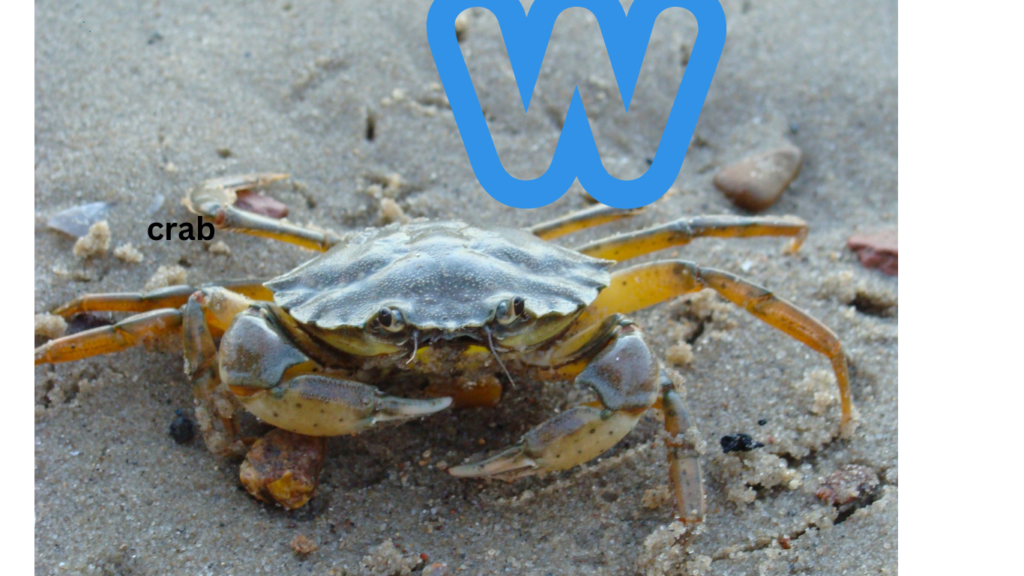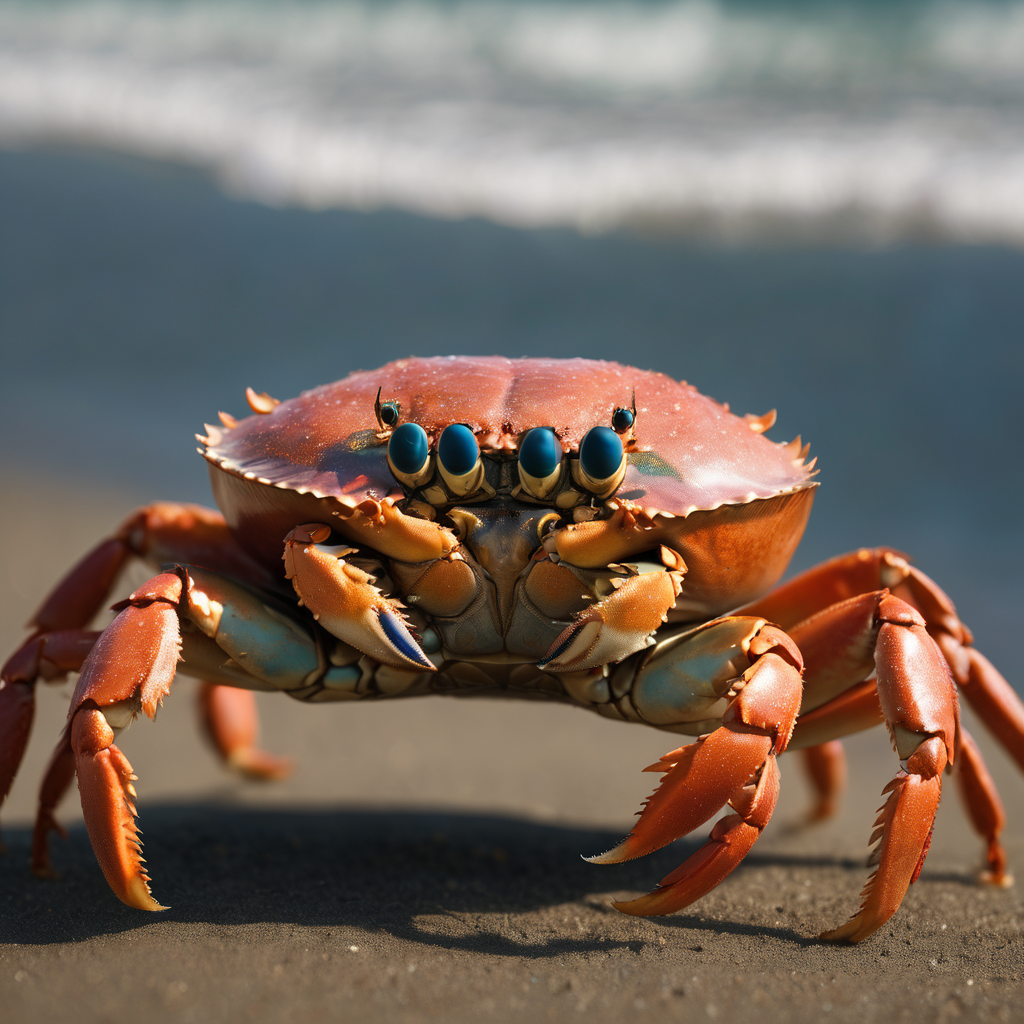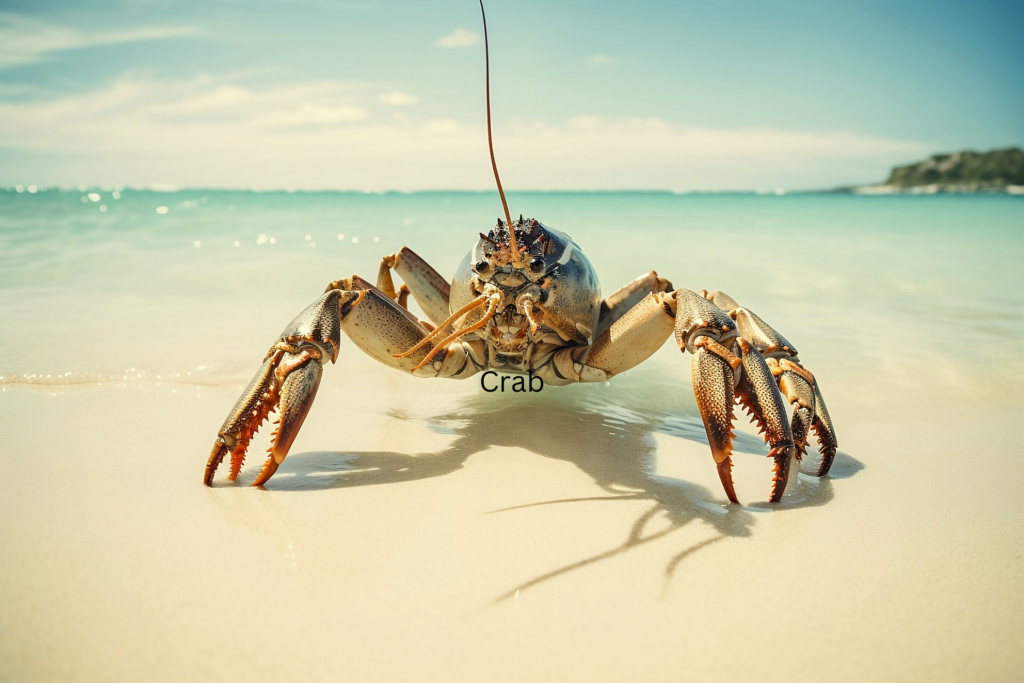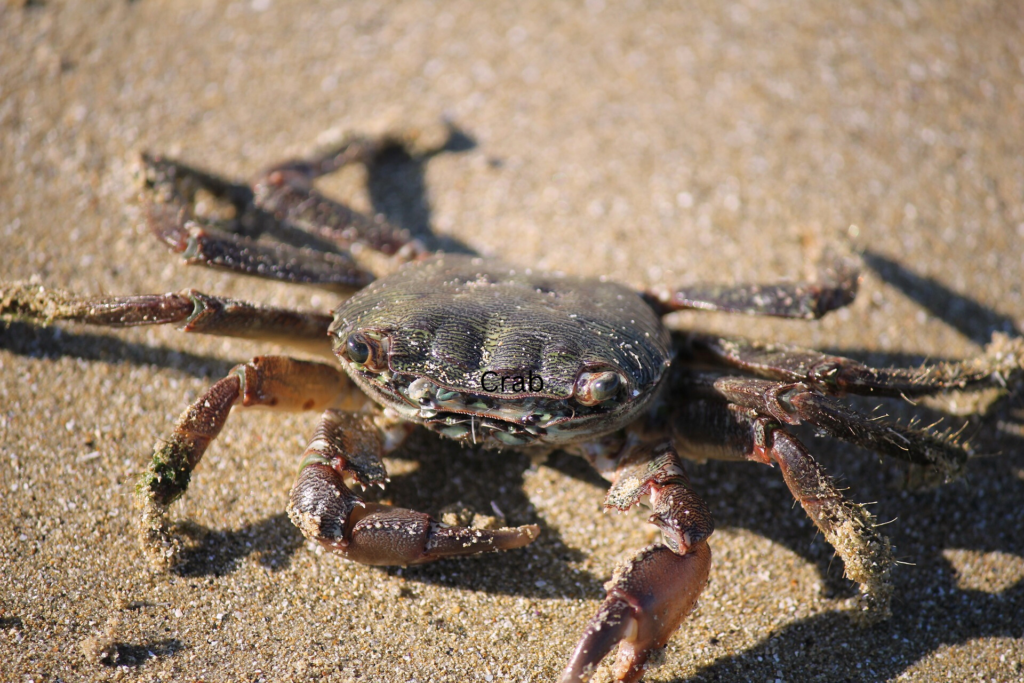
The Incredible Excursion of a Crab

Crab
Introduction:
The Incredible Excursion of a Crab:2 Exploring the Tides of Life” The Incredible Excursion of a Crab: Exploring the Tides of Life” In the shifting sands and swirling currents of the ocean, a small but resilient creature embarks on an extraordinary journey—the crab. With their armored shells, tenacious claws, and ancient instincts, crabs navigate a world of constant change and formidable challenges. Join us on an immersive exploration of the remarkable journey of a crab as we uncover its biology, behavior, ecological role, and the awe-inspiring adventures that await beneath the waves.

Chapter 1: The Crab Revealed: Anatomy and Adaptations:” the-incredible-excursion-of-a-crab:-exploring-the-tides
Crabs, members of the crustacean family, are renowned for their distinctive appearance and unique adaptations for life in aquatic environments. Their hard exoskeletons provide protection from predators, while their powerful claws are versatile tools for defense, feeding, and communication. Crabs also possess specialized appendages for swimming, walking, and burrowing, allowing them to navigate diverse habitats with ease. By delving into the anatomy and adaptations of crabs, we gain insights into the secrets of their success in the underwater realm.

Chapter 2: The Crab’s Life Cycle: From Larvae to Adults:
The journey of a crab begins with a tiny larva hatching from an egg, drifting in the ocean currents as it undergoes a series of molts and metamorphoses. As the larva grows, it develops into a juvenile crab, eventually settling on the ocean floor to begin its life as an adult. Crabs go through multiple stages of development, shedding their exoskeletons periodically to accommodate their increasing size. By exploring the life cycle of crabs, we gain insights into the challenges and transformations they undergo on their journey to adulthood.

Chapter 3: The Quest for Food: Crab Feeding Strategies and Adaptations:
Crabs are opportunistic feeders with diverse diets that include algae, plankton, small fish, mollusks, and detritus. They use a variety of feeding strategies and adaptations to capture prey, including scavenging, grazing, predation, and filter-feeding. Crabs possess specialized mouthparts, digestive systems, and sensory organs that enable them to locate, capture, and process food efficiently. By examining the feeding strategies and adaptations of crabs, we gain insights into their role as vital components of marine food webs and ecosystems.

Chapter 4: The Perils of Predation: Crabs and Their Predators:
Crabs face numerous threats from predators in their underwater habitats, including fish, birds, marine mammals, and other crustaceans. They have evolved a range of anti-predator behaviors and adaptations to evade detection and avoid becoming prey, including camouflage, burrowing, and rapid escape responses. Crabs also exhibit social behaviors such as aggregation and mobbing to defend against predators and increase their chances of survival. By exploring the predator-prey dynamics of crabs, we gain insights into the challenges they face in their quest for survival in the wild.

Chapter 5: The Wonders of Reproduction: Crab Mating and Reproductive Strategies:
Crabs employ a variety of reproductive strategies and behaviors to ensure the survival of their offspring in the harsh marine environment. They engage in elaborate courtship rituals, mate guarding, and sperm competition to maximize their reproductive success. Female crabs produce thousands of eggs, which they carry beneath their abdomens until they hatch into larvae. Parental care varies among crab species, with some providing no care, while others guard and protect their offspring until they are ready to fend for themselves. By delving into the mating and reproductive strategies of crabs, we gain insights into the complexities of life underwater and the wonders of marine biology.

Chapter 6: The Circle of Life: Crab Ecological Roles and Conservation:The Incredible Excursion of a Crab:2 Exploring the Tides of Life”
Crabs play crucial roles in marine ecosystems as scavengers, predators, prey, and ecosystem engineers. They help regulate populations of other marine organisms, recycle nutrients, and maintain the health and balance of coastal ecosystems. However, crabs face numerous threats from human activities, including habitat destruction, pollution, overfishing, and climate change. Conservation efforts aimed at protecting crabs and their habitats focus on habitat restoration, sustainable fishing practices, marine protected areas, and public education. By raising awareness about the ecological roles of crabs and advocating for their conservation, we can ensure a brighter future for these fascinating creatures and the oceans they call home.
Through this comprehensive exploration of the journey of a crab, we have uncovered the wonders of life in the ocean and the remarkable adaptations that enable crabs to thrive in their underwater world. By incorporating SEO optimization techniques, we aim to amplify the reach and impact of this blog, sharing the awe-inspiring journey of a crab with audiences around the globe.

[…] the intricacies of crab carapaces, the exoskeletal defensive layer that protects these creatures. Uncover the assortment in […]
[…] have a fragmented body separated into three fundamental parts: the cephalothorax (head and chest), midsection, and tail. They have ten jointed legs, with the […]
[…] of slugs conveyed across the globe, occupying a large number of earthbound and oceanic territories. Probably the most widely recognized slug species incorporate the nursery slug, panther slug, banana slug, […]
[…] food web. Examine their life structures, life cycle, and the shocking hoards that make them a presentation in the virus waters enveloping […]
Can you be more specific about the content of your enticle? After reading it, I still have some doubts. Hope you can help me.